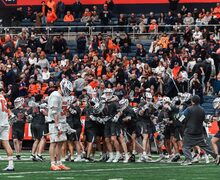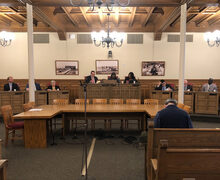Teacher-student racial gap in Syracuse and Rochester is being addressed with push toward teacher diversity, but more effort is needed
When a student in a Syracuse or Rochester public school walks into a classroom, they are more likely than not to have a white teacher. But the students themselves are more likely to be a person of color. This racial gap can limit a student’s growth, which is why districts with large minority populations should strive for teacher diversity rather than strictly hiring on a merit-only basis.
The Rochester City School District is in the midst of hiring season for the next school year, and is pushing to add more teachers with diverse backgrounds to classrooms. District officials have plans to travel as far as Puerto Rico to recruit teachers of color, according to Syracuse.com. The Syracuse City School District is making similar efforts to increase diversity among its teachers.
In the Rochester district, 80 percent of teachers are white, while only 10 percent of students are, according to the New York State Education Department data website. The Syracuse City School District has a similar makeup: 75 percent of teachers are white, while 78 percent of students are of color, said Scott Persampieri, director of recruitment and selection for the district, in an email.
This diversity gap between students and teachers creates a divide from the very beginning of a student’s education that stifles progress and doesn’t empower them to overcome the low socioeconomic backgrounds they often come from. When students are able to work with a teacher who can relate to their own experiences and challenges, that student is more likely to stay engaged in the classroom, which benefits them in the long run.
Compare the demographics of these cities to nearby school districts in Onondaga County. The Fayetteville-Manlius and Jamesville-Dewitt school districts just outside Syracuse both have a significant majority of white students, at 83 percent and 76 percent, respectively, according to the education department website.
While these differences are not problematic in and of themselves, they may explain broader trends that do have a much bigger impact on a student’s educational progress. Syracuse public schools had a 61 percent graduation rate in 2016, according to the education department website, while Fayetteville-Manlius had a 95 percent graduation rate and Jamesville-Dewitt had a 90 percent graduation rate.
While the main hiring priority of any school district should be hiring the most qualified teachers who can build up their students the most, building a teaching workforce that is reflective of the community in which they work must be a goal for districts. The differences between these students and their teachers is obvious to all and helps no one.
While it may seem like an unnecessary effort, a more diverse workforce of teachers can significantly improve the learning environment. Having a diverse teacher workforce may be the most attainable method districts can take to raise graduation rates and general success within the district.
In addition to the Rochester City School District, the Syracuse City School District is also working to foster more diversity among its teachers. When teaching candidates are equally matched in terms of qualifications, diversity is one factor that can lead to the hiring decision, said Persampieri, the director of recruitment and selection for Syracuse City School District.
“We are committed to continuing to build a faculty and staff that better represents the student population we serve,” Persampieri said.
He added that the district is continuously looking to historically black colleges and universities as a source of new teachers. The district also recently created the Urban Fellowship Program as a way of attracting prospective minority teachers to work in the district, Persampieri said. This program would provide a prospective teacher tuition for a master’s degree in education at Syracuse University. In exchange, that individual would teach in the district for five years.
“We believe this young initiative, will, over time, help us to slowly transform our teaching staff,” Persampieri said.
The racial gap between students and teachers in the Syracuse and Rochester school district is a complicated problem with no obvious solutions. But simply trying to hire the best teachers regardless of their race ignores the racial schisms that have led to the sharp divide in these districts. Both districts have taken measures closing the diversity gap. But more can and should be done for the next generation.
Cole Jermyn is a junior environmental resource engineering major at SUNY-ESF. His column appears weekly. He can be reached at cdjermyn@syr.edu and followed on Twitter @Cjermyn8.
Published on March 8, 2017 at 11:40 am






